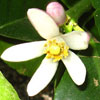| Author |
Message |
Millet
Citruholic


Joined: 13 Nov 2005
Posts: 6657
Location: Colorado
|
|
| Back to top |
|
 |
gerdhart
Joined: 26 Jan 2012
Posts: 21
Location: Geneva - Switzerland
|
| Posted: Fri 10 Aug, 2012 8:00 am |
|
Hi Millet,
Very interesting! It is in old French, so I doubt it will be easy to have an accurate translation in English... |
|
| Back to top |
|
 |
igor.fogarasi
Moderator


Joined: 11 Apr 2011
Posts: 558
Location: Novi Sad, Serbia
|
| Posted: Fri 10 Aug, 2012 12:16 pm |
|
@Millet - Unfortunately no, at least there's no easy way to perform such operation, as far as I know. Although the book is available in searchable image format, you cannot obtain its searchable version. Unsearchable PDF version, which could be downloaded, is practically unusable for any kind of offline application processing without quite a dose of artificial intelligence. So it would be kind of quirky to get the plain text out of it. On the other hand, Google play does not provide translation for such books. |
|
| Back to top |
|
 |
Millet
Citruholic


Joined: 13 Nov 2005
Posts: 6657
Location: Colorado
|
| Posted: Fri 10 Aug, 2012 10:38 pm |
|
That is to bad. I would have like to read what Galleso had to say. Galleso is quite famous in Citrus history. - Millet |
|
| Back to top |
|
 |
Laaz
Site Owner


Joined: 12 Nov 2005
Posts: 5663
Location: Dorchester County, South Carolina
|
|
| Back to top |
|
 |
gerdhart
Joined: 26 Jan 2012
Posts: 21
Location: Geneva - Switzerland
|
| Posted: Sat 11 Aug, 2012 1:55 pm |
|
there are different French speakers on the forum; I'll be glad to help translating 1 or 2 pages and it could be then corrected by an English speaker for better understanding. a team work that could be then published for anyone interested and of course for free 
Millet, in the meantime, if you can "locate" some pages of your interest, I'll be glad to start |
|
| Back to top |
|
 |
Millet
Citruholic


Joined: 13 Nov 2005
Posts: 6657
Location: Colorado
|
| Posted: Sat 11 Aug, 2012 4:08 pm |
|
gerdhart, that is very generous of you. However, as everything is in French, and I know nothing of the French language, I cannot tell which pages might be of interest and which are not. I did try using the computer's translator but the translation into English did not make a lot of sense, plus the translator program did not recognize many of the French words. Because Google is an American corporation, it would be a nice service if they translated the book so that the English speaking world could also enjoy it, but such is life . |
|
| Back to top |
|
 |
Sanguinello
Gest
|
| Posted: Sat 11 Aug, 2012 5:25 pm |
|
I think there will be translations into modern languages ... at least in modern french.
I would like to help, but ancient french is a bit about my linguistic skills ...
Ancient german, english or italian would be no problem ... |
|
| Back to top |
|
 |
Millet
Citruholic


Joined: 13 Nov 2005
Posts: 6657
Location: Colorado
|
| Posted: Sun 12 Aug, 2012 3:21 pm |
|
Georges Gallesio was a lawyer, artist and a civil servant as well as a botanist. He conducted experiments in his fruit garden in Savona. During Georges Gallesio's work he presented his findings that hybrids are the offspring of cross pollination, and not due to grafting as it was considered before him. - Millet |
|
| Back to top |
|
 |
Sanguinello
Gest
|
| Posted: Sun 12 Aug, 2012 3:45 pm |
|
I know Savona like my own city ...
It is a big city now, province capital and big harbour, but still there are lots of citrus plants to see ... |
|
| Back to top |
|
 |
Millet
Citruholic


Joined: 13 Nov 2005
Posts: 6657
Location: Colorado
|
| Posted: Sun 12 Aug, 2012 7:08 pm |
|
|
|
| Back to top |
|
 |
Sanguinello
Gest
|
| Posted: Sun 12 Aug, 2012 7:15 pm |
|
... what I said ... ?
 |
|
| Back to top |
|
 |
igor.fogarasi
Moderator


Joined: 11 Apr 2011
Posts: 558
Location: Novi Sad, Serbia
|
| Posted: Mon 13 Aug, 2012 10:50 am |
|
@Millet - Thanks for sharing the link! |
|
| Back to top |
|
 |
Millet
Citruholic


Joined: 13 Nov 2005
Posts: 6657
Location: Colorado
|
| Posted: Mon 13 Aug, 2012 5:27 pm |
|
After reading just a couple pages of Gorges Gallesio's 1811 book, I read that in 1811 the sweet orange and the sour orange were at that time both grouped under C. aurantium. - Millet (157 to go-) |
|
| Back to top |
|
 |
igor.fogarasi
Moderator


Joined: 11 Apr 2011
Posts: 558
Location: Novi Sad, Serbia
|
| Posted: Wed 15 Aug, 2012 11:43 am |
|
| Fruits of warm climates. Julia F. Morton, Miami, FL. wrote: |
One of the most widely favored of the world's fruits, the orange, sweet orange, or round orange, was for many years known as Citrus aurantium var. sinensis L. and considered to be a form of the sour orange (q.v.). It is still not universally agreed to be a distinct species, C. sinensis Osbeck, but it is usually treated as though it were. |
I know I've read it somewhere before. And yes, it was quite a surprising fact indeed! |
|
| Back to top |
|
 |






















